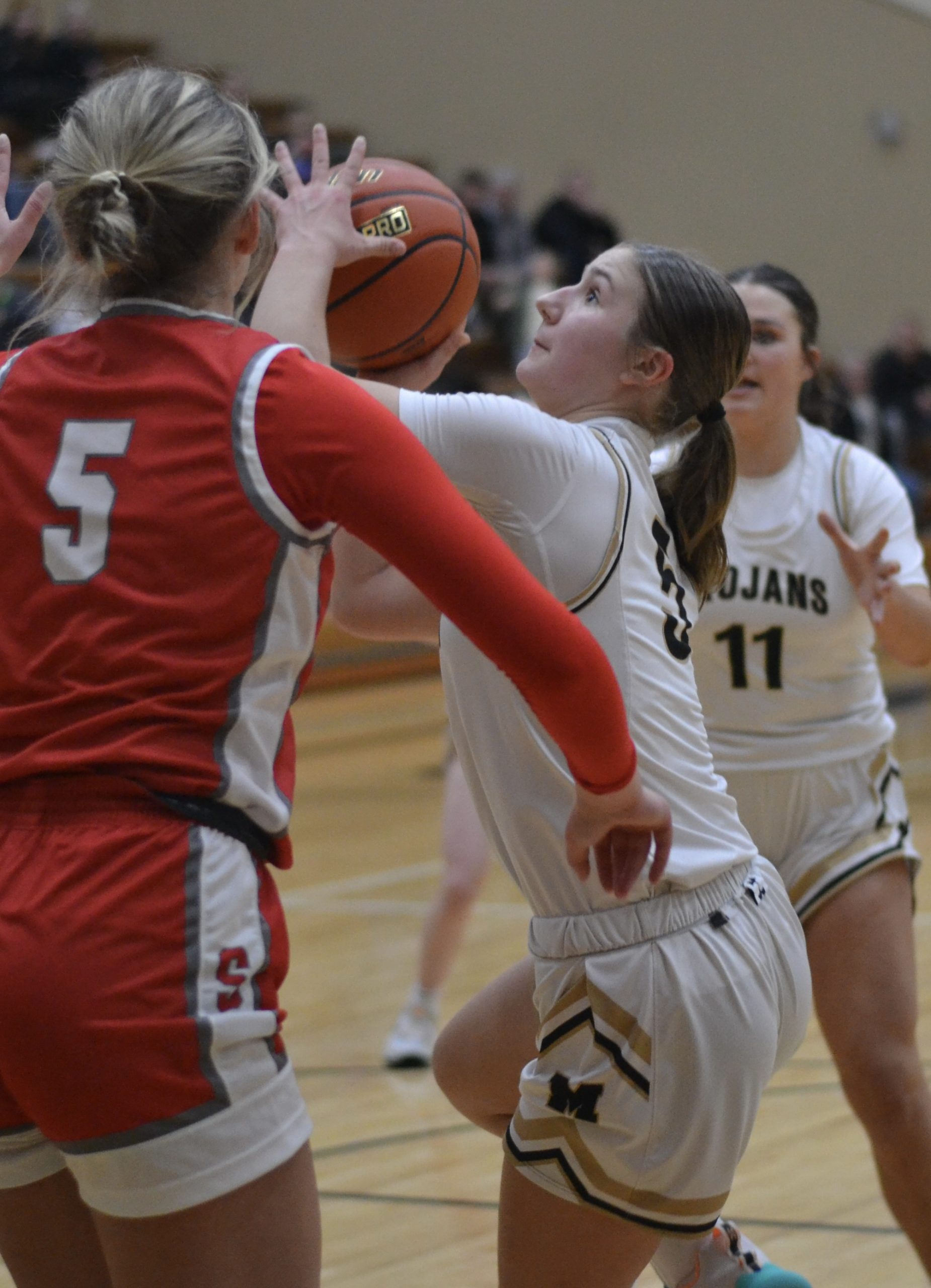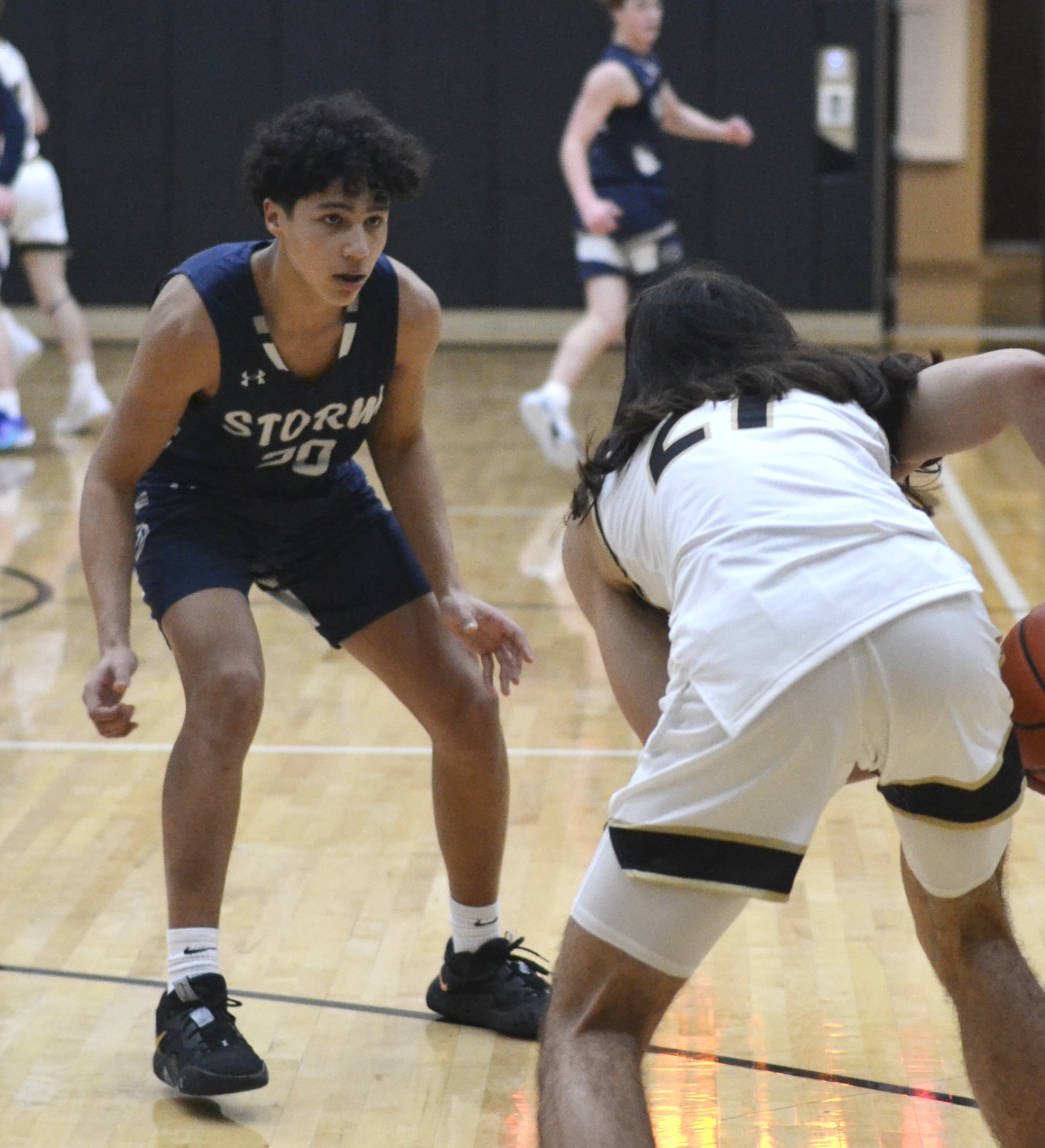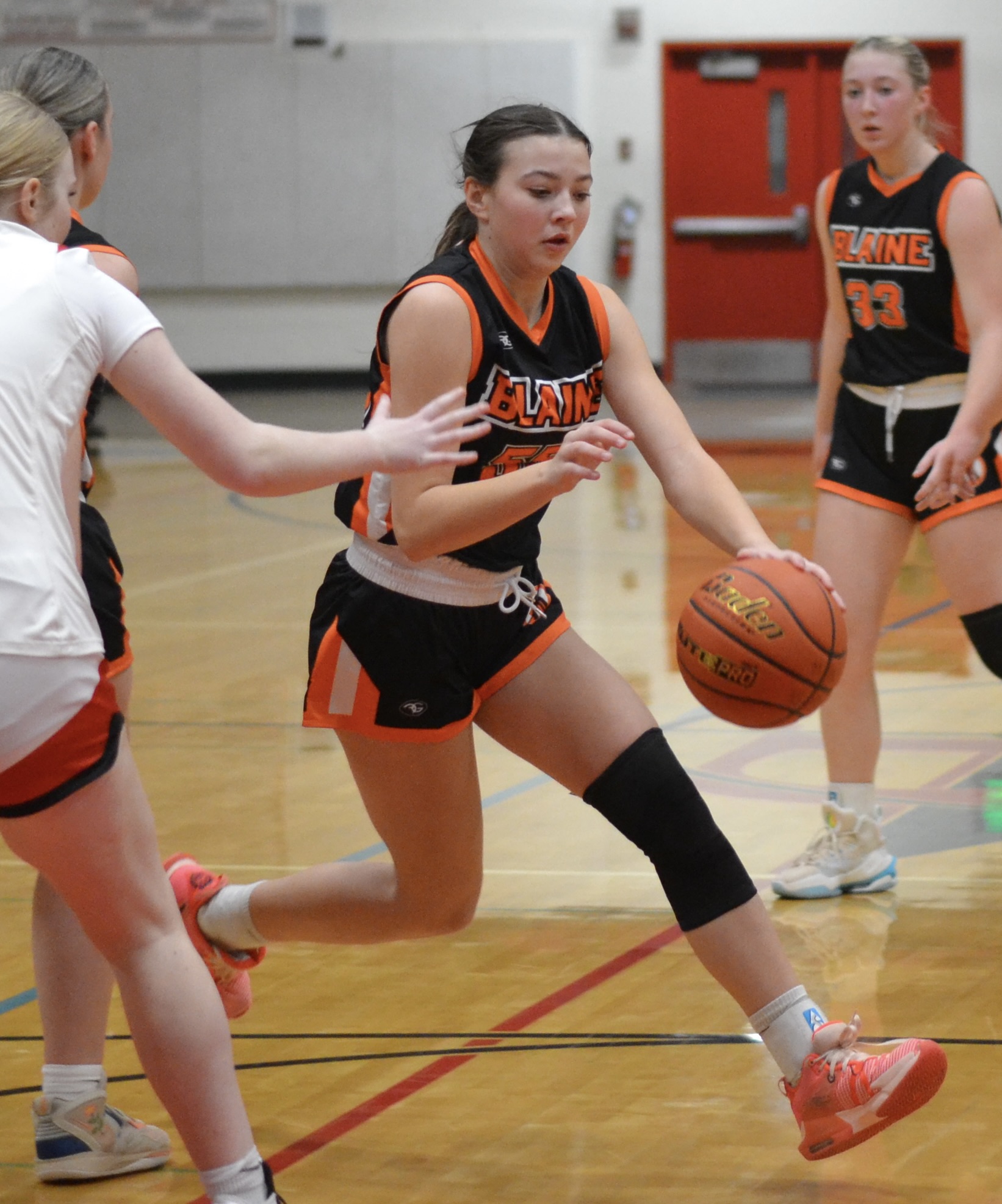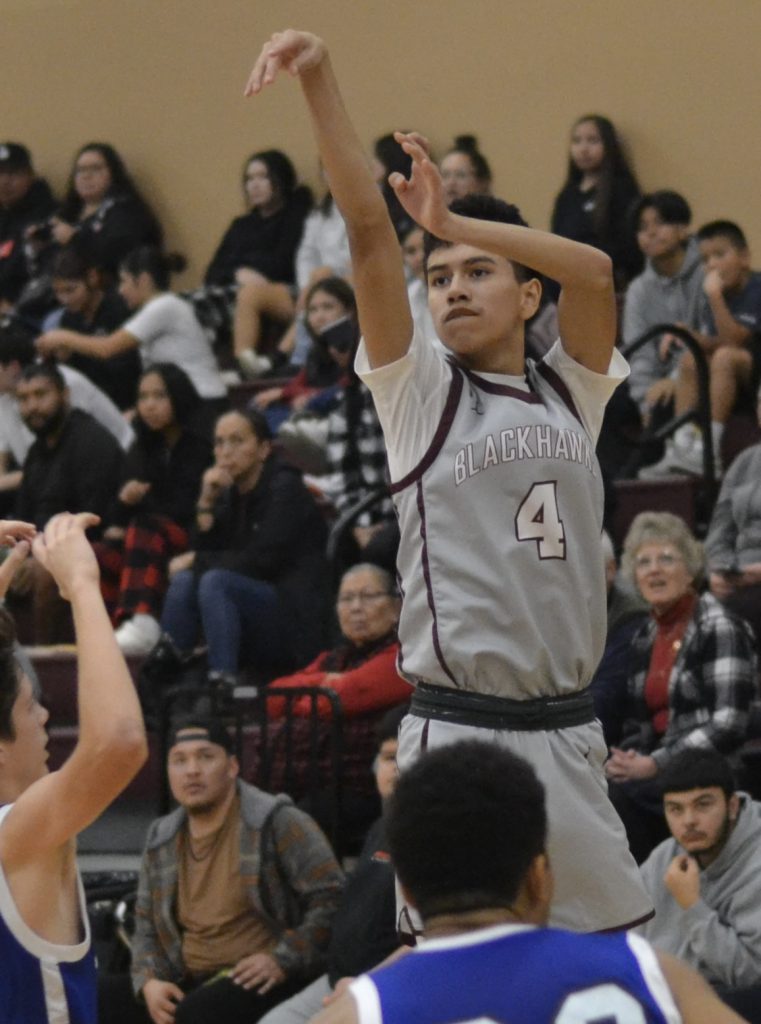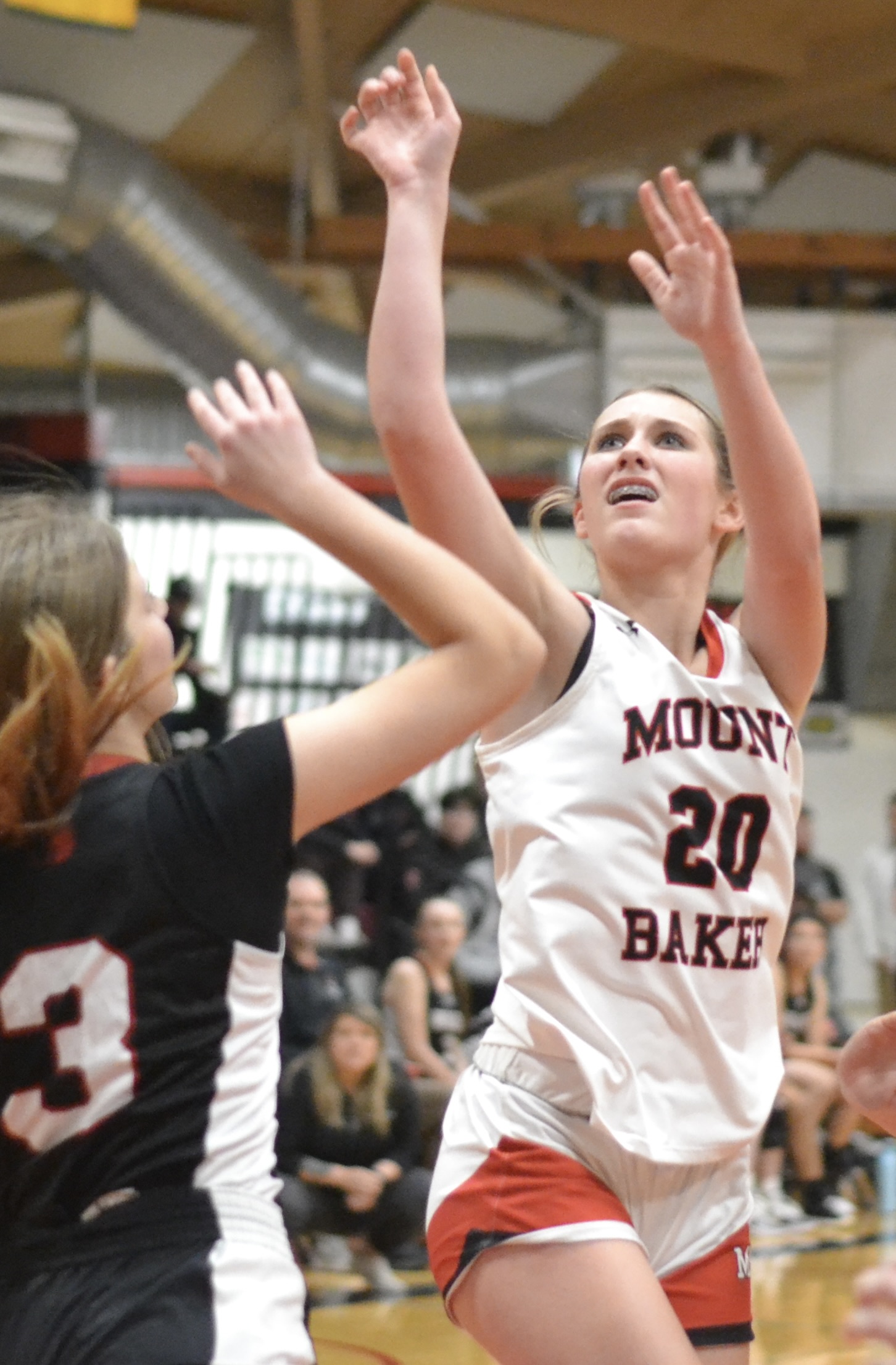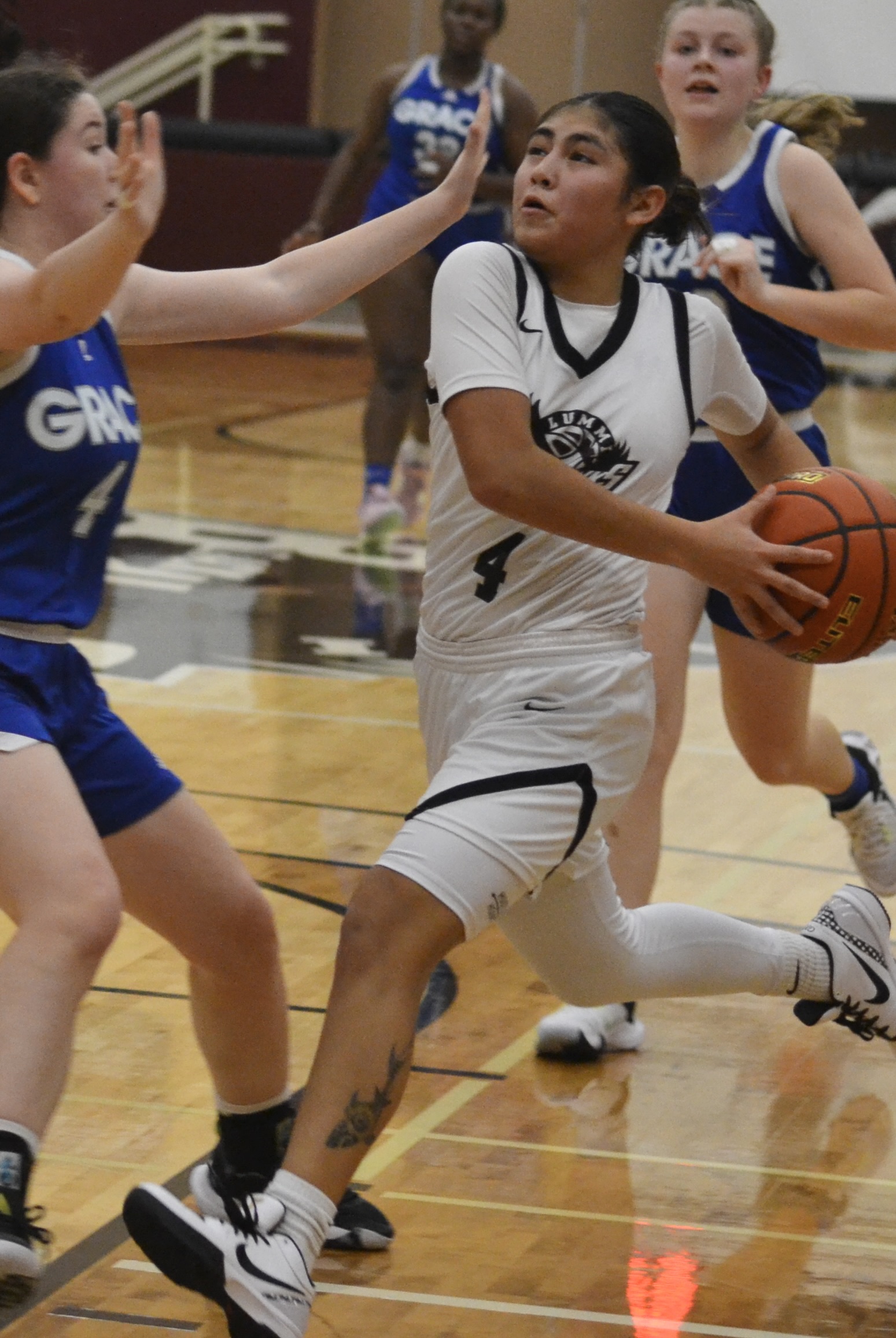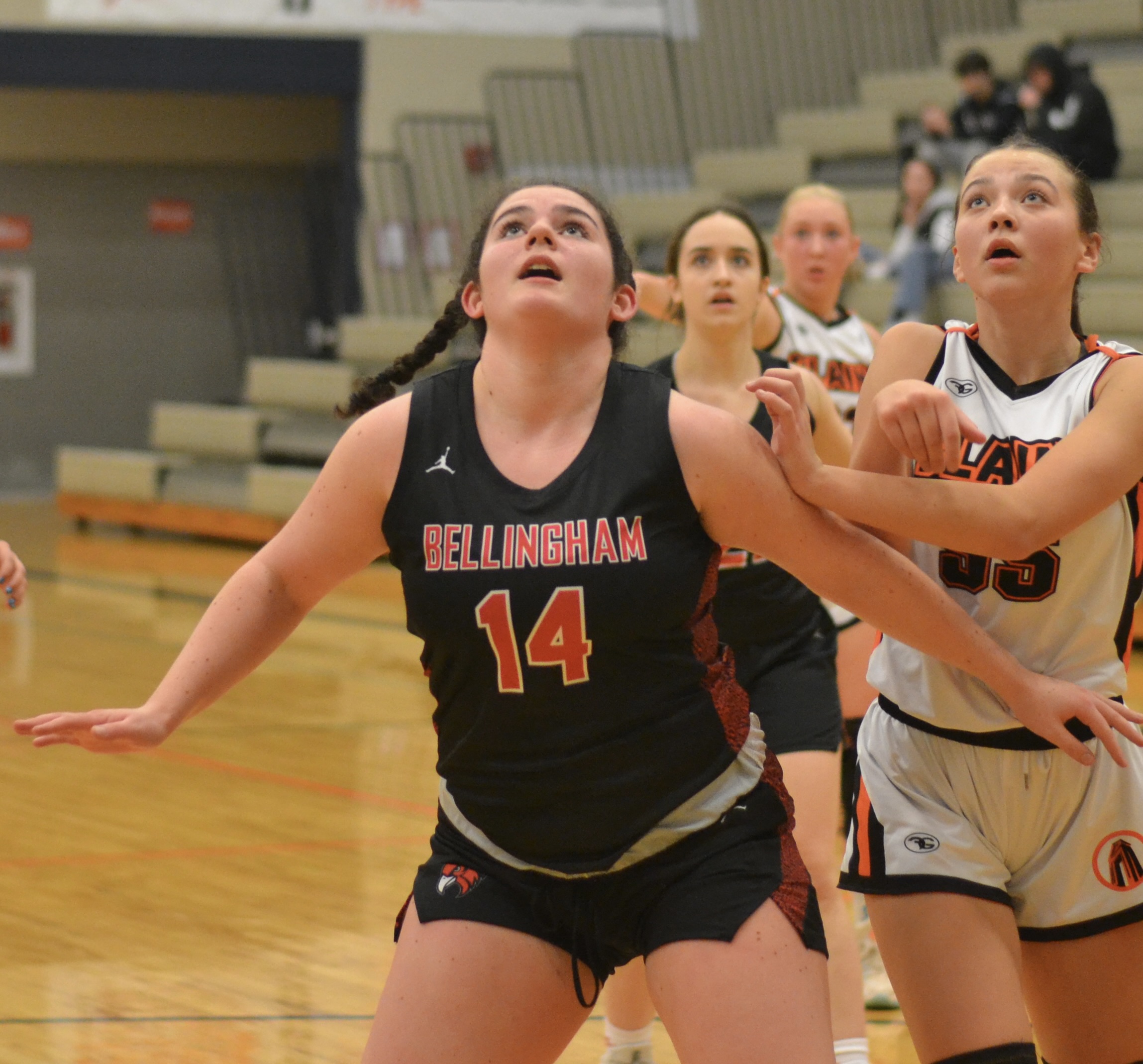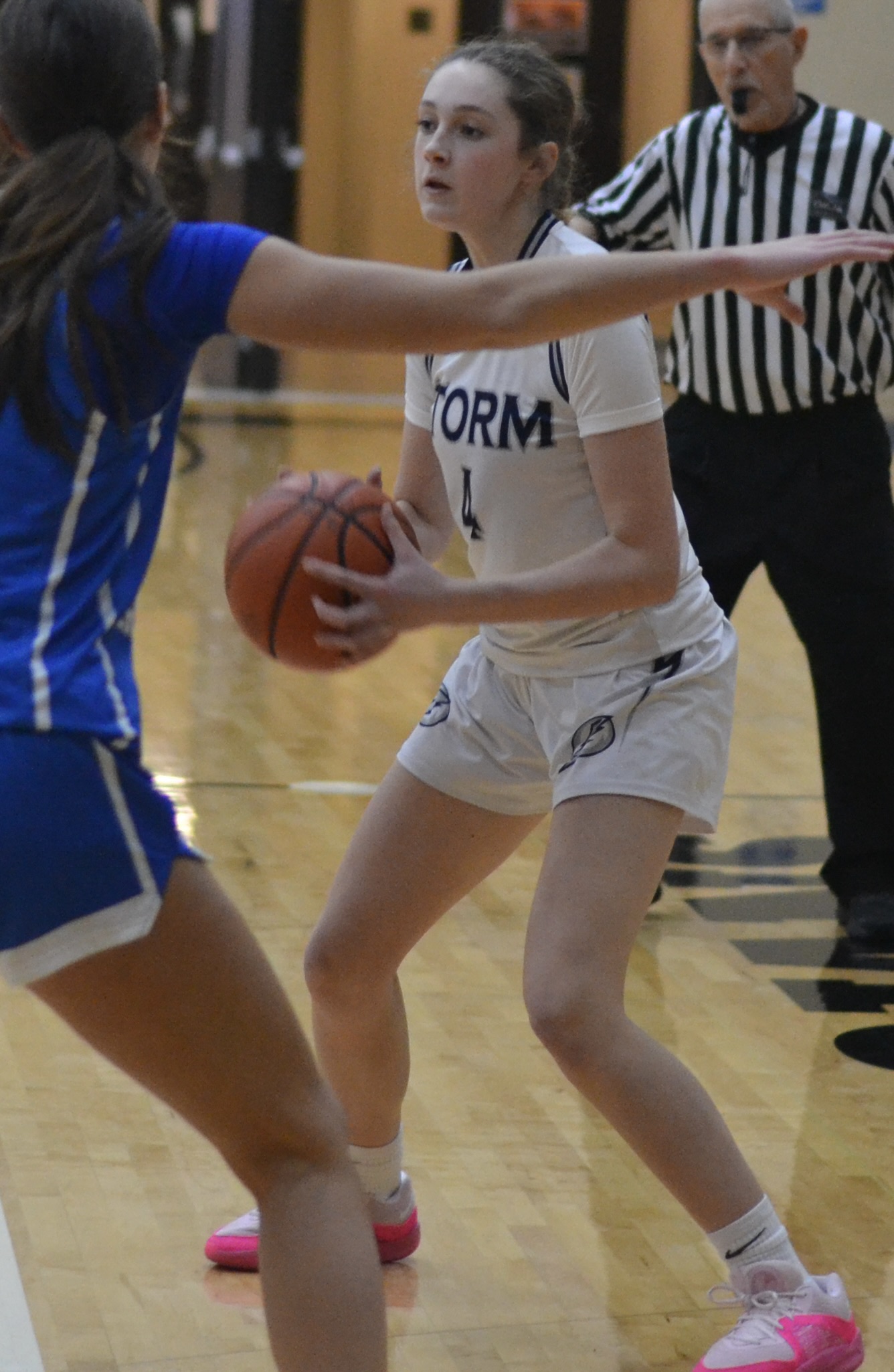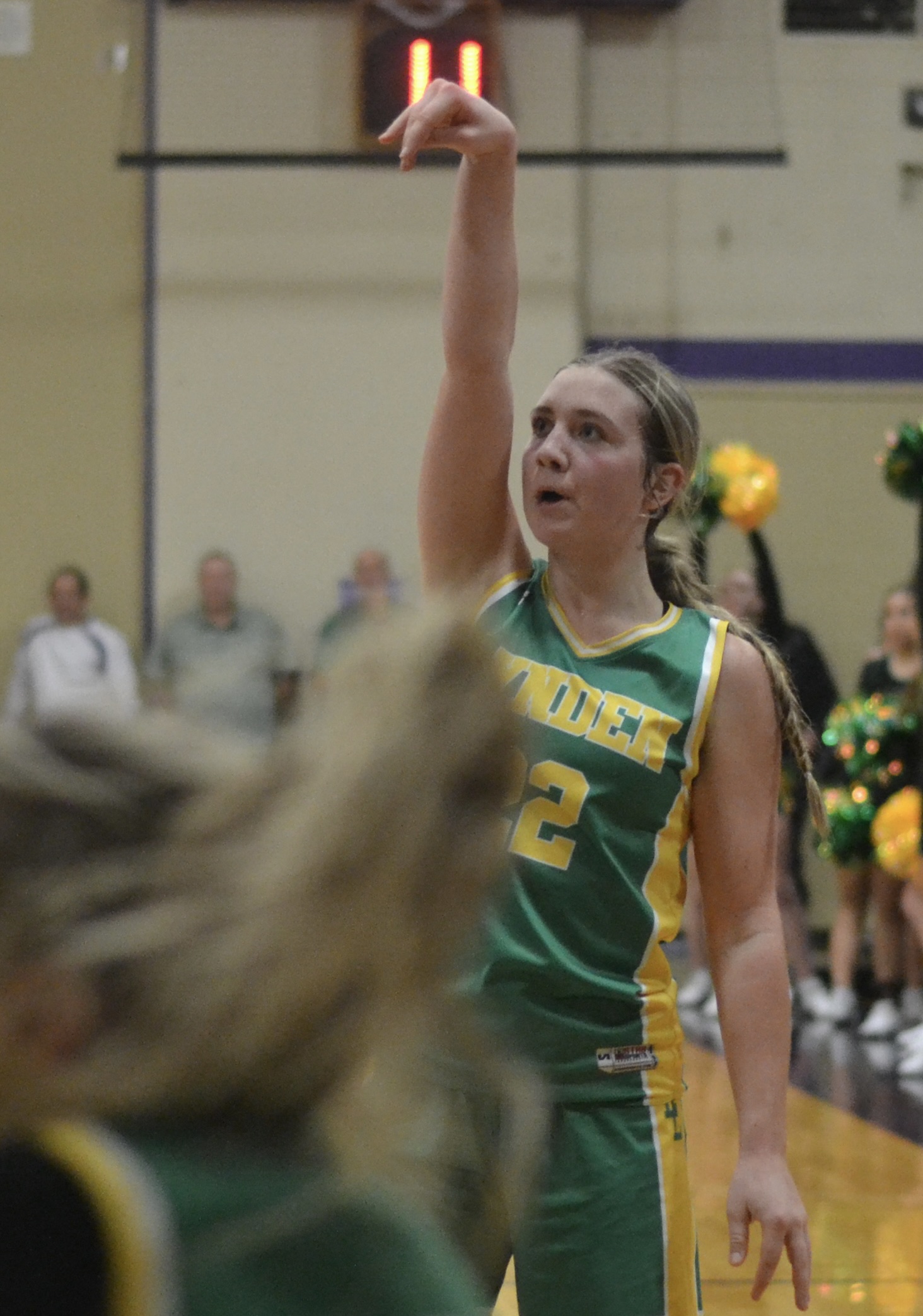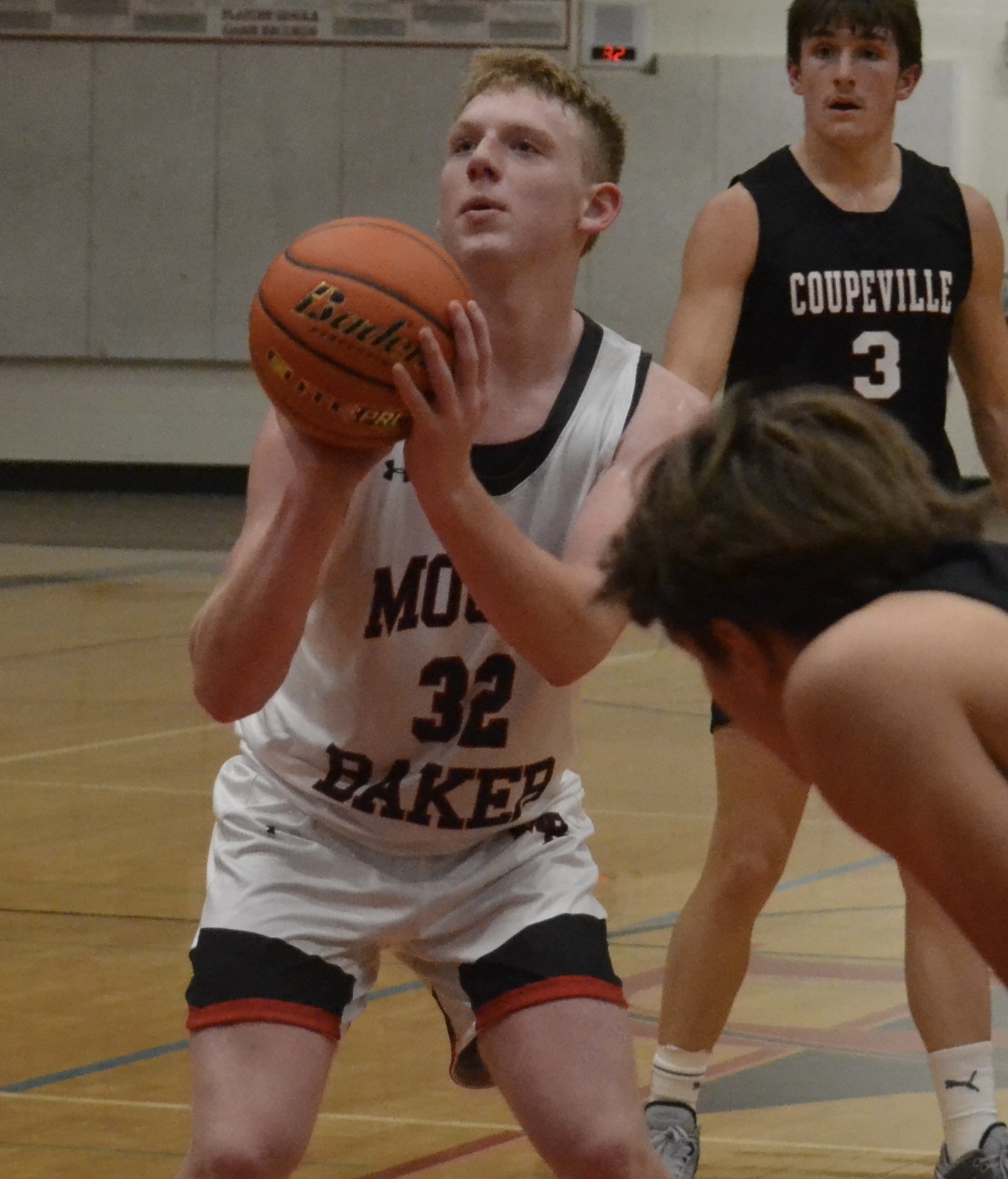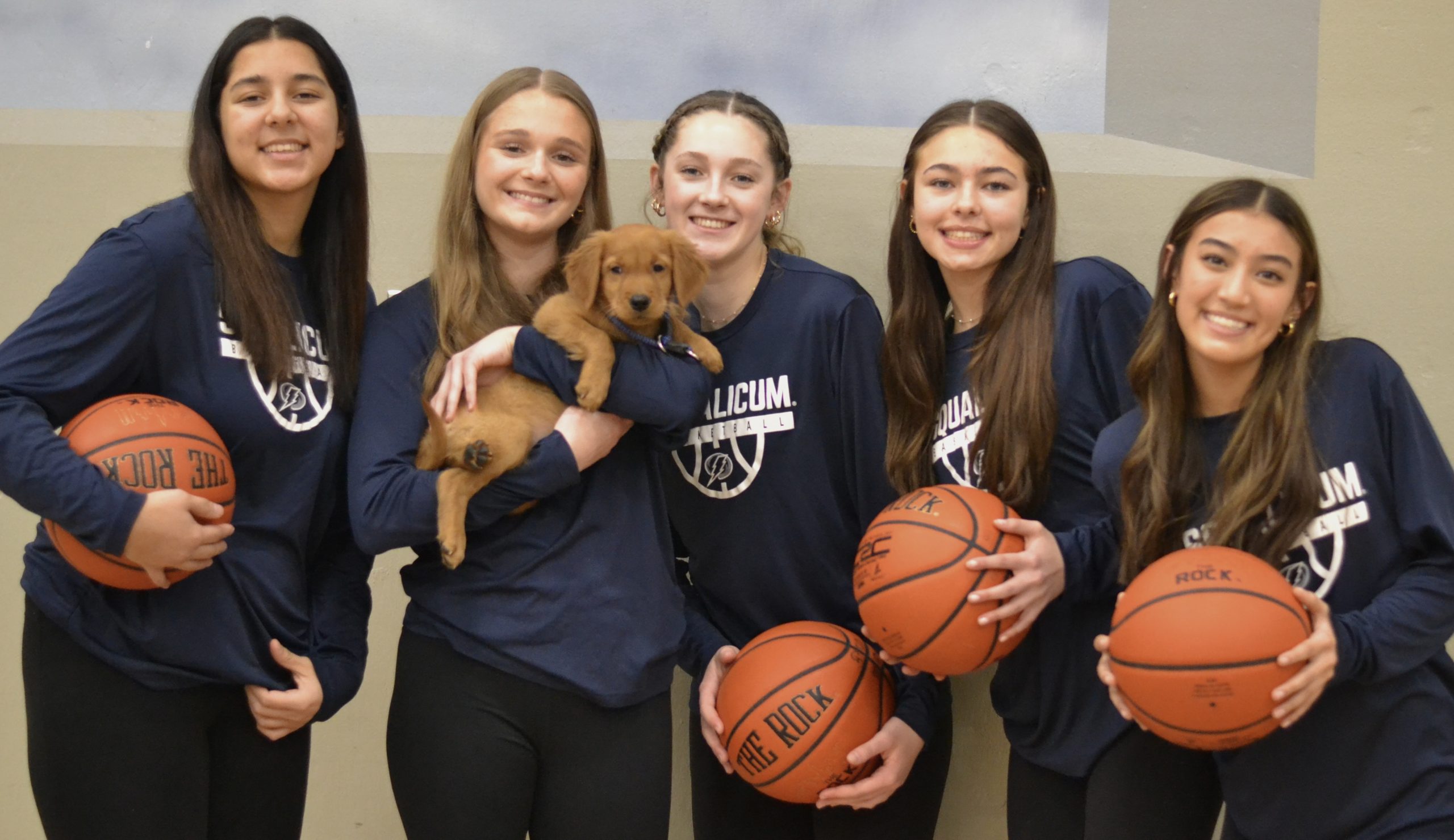It’s not unusual to have a freshman make a difference on a varsity team. What is exceptional is to have a group of freshmen make a difference on an entire league.
Say hello to the Class of 2027.
Of the 22 boys and girls varsity basketball teams in Whatcom County, at least 16 regularly have freshmen on their rosters with 10 having a freshman starter.
“It’s phenomenal that we have so many freshmen,” said Squalicum girls coach Jenalyn Brown, who has five on her squad. “This year, our concern has been more about the freshmen than it has ever been in the past. So I guess that’s how they’re changing the league.”
This winter, the majority of freshmen players are girls. Ten of the 11 girls team have at least one freshman on their varsity squads — and of those 23 freshmen playing, seven are starting. And while there are only nine freshman boys on varsity rosters, three of them are starting.
When asked why there’s been a flood of talented freshmen, coaches pointed to a variety of reasons — some physical, some societal, some basketball-related, and many not. In other words, it’s complicated.
One long-time explanation has been that weaker teams and smaller schools might have less competition from upperclassmen leaving more spots available for freshmen.
Nooksack Valley, for example, the top-ranked Class 1A team and defending state champion, is the only girls team that doesn’t suit up any ninth-graders. Neither do the defending 2A state champion Lynden boys.
Lummi Nation, on the other hand, is a 1B school and the county’s smallest. Its boys team has three freshmen including starter Dyson Edwards, and while the girls team only has one — all-star Jemma James — the Lady Blackhawks have four eighth-graders on varsity.
“The league in general is down as far as the number of girls turning out,” said Lynden girls coach Rob Adams of the Northwest Conference. “That has a big influence on young players playing. When I first got in the Northwest Conference it was so stout that freshmen just didn’t play.”
But it’s not simply that smaller schools or weaker teams play more youngsters. Adams and other coaches pointed out that more girls than ever are playing AAU or select ball. Perhaps the county’s most talented freshman — Finley Parcher — plays for Adams’s Lions, the state’s second-ranked 2A team.
Then there is Lynden Christian, Washington’s most successful 1A girls program with 14 state titles and a participant in the past five state championship games. If any team would be tough for a freshman to break into, it would be the Lyncs.
Yet coach Brady Bomber said in his 10 seasons there has been at least one freshman on varsity every year and a freshman in the regular rotation and even starting on seven of his teams. This season, the Lyncs have four ninth-graders on the varsity roster.
He saw other reasons such as girls specializing more rather than playing multiple sports, which means fewer players but more talented freshmen, and the willingness of boys to wait longer to reach the varsity level.
“We are finding that girls would rather go play in a rec league like Cornerstone or stop playing than wait another year before getting an opportunity to play varsity,” said Bomber, who knows about freshman basketball having been a four-year starter for Lynden’s state teams in the mid-2000s.
Coaches also mentioned the physical difference between teenage boys and girls, which not only affects the makeup of teams but how the game is played.
“The physical gap between a freshman girl and a senior girl is generally smaller than it is in boys,” said Bomber. “Many top freshman girls will walk into high school physically ready to play whereas if you looked at boys JV teams you’d see more highly skilled freshman that aren’t physically ready to play varsity.”
Brown said the emphasis on size and especially jumping ability in the boys games makes it harder for younger boys to compete at the varsity level, while the emphasis is less on the physical for girls.
“Girls basketball is more horizontal and about basketball IQ, mechanics, and fundamentals,” said Brown. “Boys basketball is more vertical. The way girls go up for a rebound is so different. It’s easier for a female to get in as a freshmen. For guys, physical size alone is so crucial.”
With five freshmen, including starter Carli Kiesau, it’s not surprising that Brown has given the subject a lot of thought. Again, Squalicum breaks the “weaker or smaller” mold since the Storm have won 12 of their past 13 games and are ranked 12th among 2A teams in the state
Besides the physical aspects and the increasing growth of girls select and summer opportunities, Brown sees other possible reasons for the trend. Among them are:
* A return to normalcy after the pandemic that saw a number of students in the upper grades discontinue their athletic careers during the COVID years leaving more openings for younger players coming up.
* Coaches adapting to the latest generation’s resistance to the “old school” authoritarian style of motivation. Translation: Gen Zers are turned off by a coach screaming “my way or the highway” and have no trouble saying, “See ya.”
* Even the size of families, which seems to be increasing, according to Brown’s experience at Squalicum. Bigger families means more siblings to look up to and learn from as well as parents willing to deal with all the busy activities of teenagers, including sports.
And sometimes, it’s simply a talented group of athletes coming through. Finley and James aren’t just good enough to start for their teams; they’re good enough to receive all-league and even all-state recognition as freshmen.
For Squalicum, the Class of ’27 has team-oriented players and mature leadership that have played together for years and who fit in well with the Storm’s veterans.
“These girls are really special,” Brown said of her freshmen, but she could have been speaking about Whatcom County’s entire freshman class. “They’ve showed some grit and tenacity and determination, to be mentally strong and tough. They’ve helped me feel confident and know that I can trust them. They’ve been crucial (to Squalicum’s success).”
Here’s a look at all the Whatcom teams that have freshmen on their rosters and a list of starters:
GIRLS
BELLINGHAM: Merritt Jensen (starting forward)
BLAINE: Teia Dube (starting guard), Kaitlyn Ritter Van Tautmann, Marcella Bring
FERNDALE: Kayla Lee, Heavens Jefferson
LUMMI NATION: Jemma James (starting guard)
LYNDEN: Finley Parcher (starting guard), Lexi Hermanutz
LYNDEN CHRISTIAN: Kortnee Tolsma, Gracelyn Russell, Ellie Pierce, Jocelyn Eshuis
MERIDIAN: Eden Bernardy (starting guard), Amelia Koning, Maddy Swanson
MOUNT BAKER: Violet Fox (starting forward)
SEHOME: Kaitlyn Schroeder
SQUALICUM: Carli Kiesau (starting guard), Addison Kettman, Lexi Robbins, Tiana Thompson, Jazzy Singh-Sanchez
BOYS
LUMMI NATION: Dyson Edwards (starting guard), Landon LaFontaine, Deandre James
LYNDEN CHRISTIAN: Dawson Hintz, Kaden Veldman
MOUNT BAKER: Kell Reardon (starting post)
NOOKSACK VALLEY: Dane Ackerman
SEHOME: Quincy Tanovan
SQUALICUM: Hunter Calloway (starting guard)
